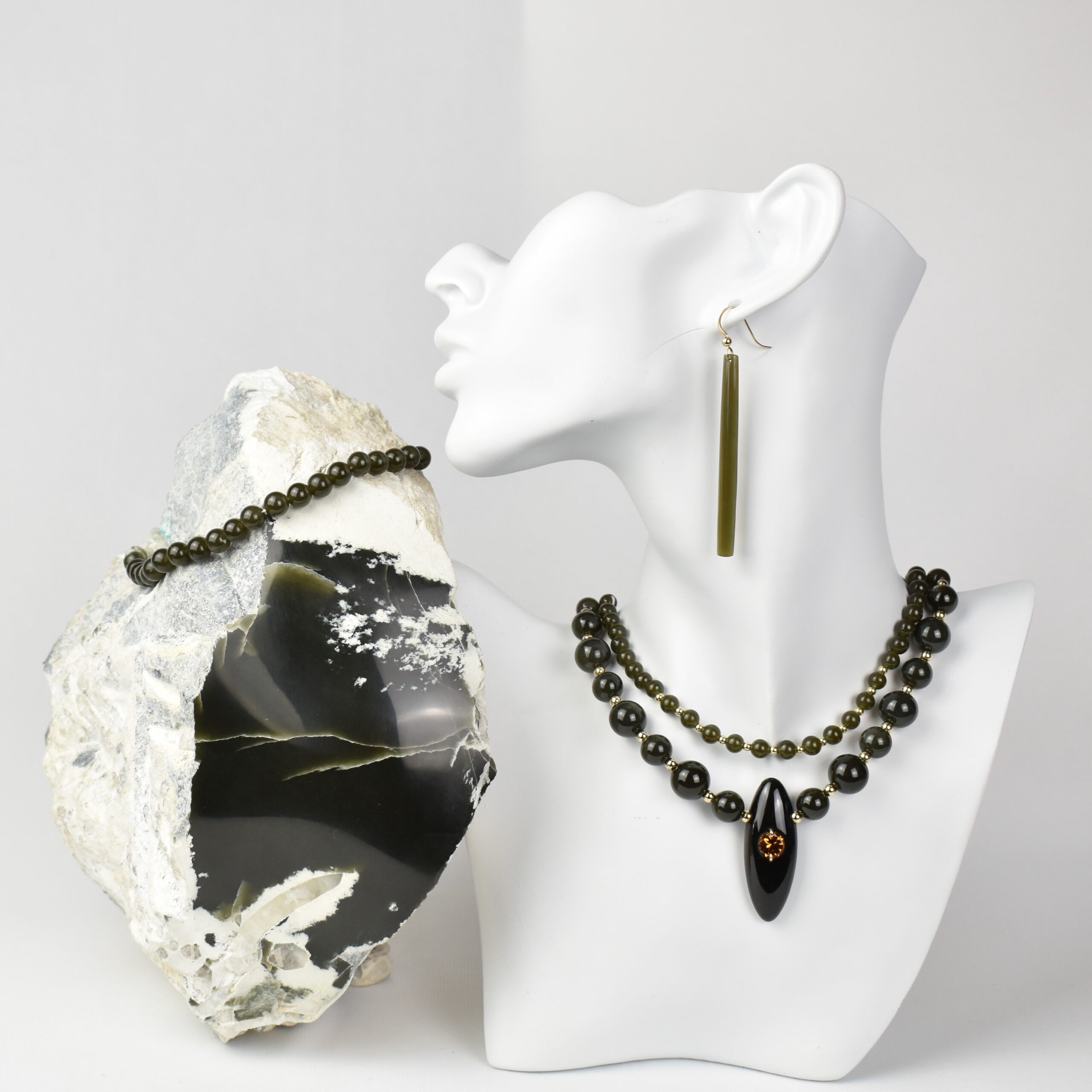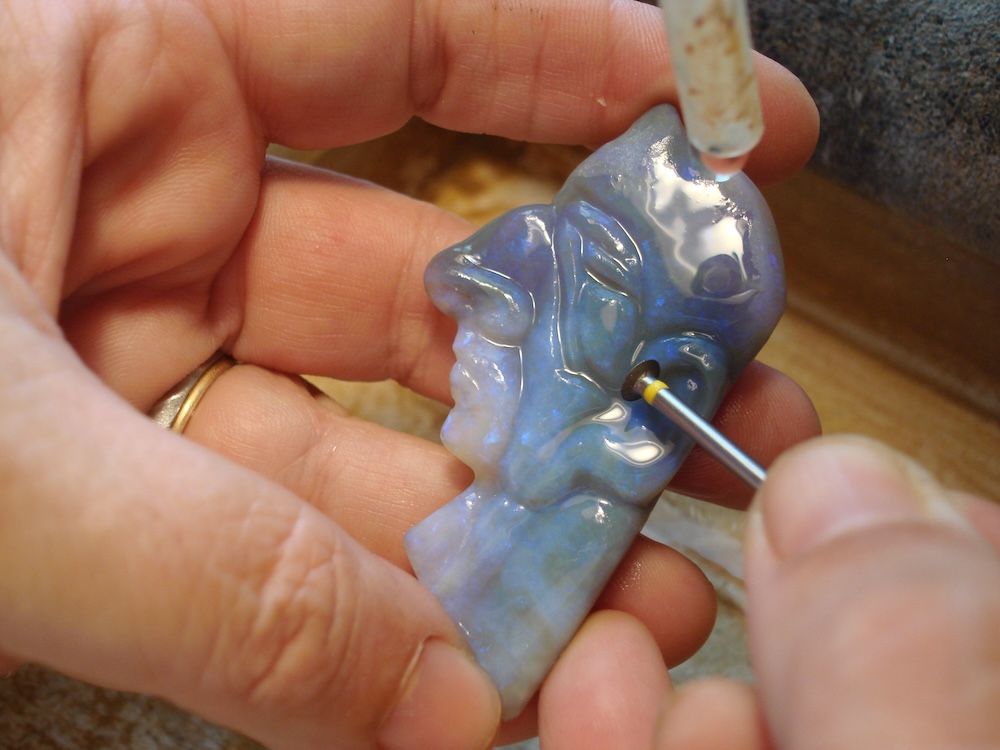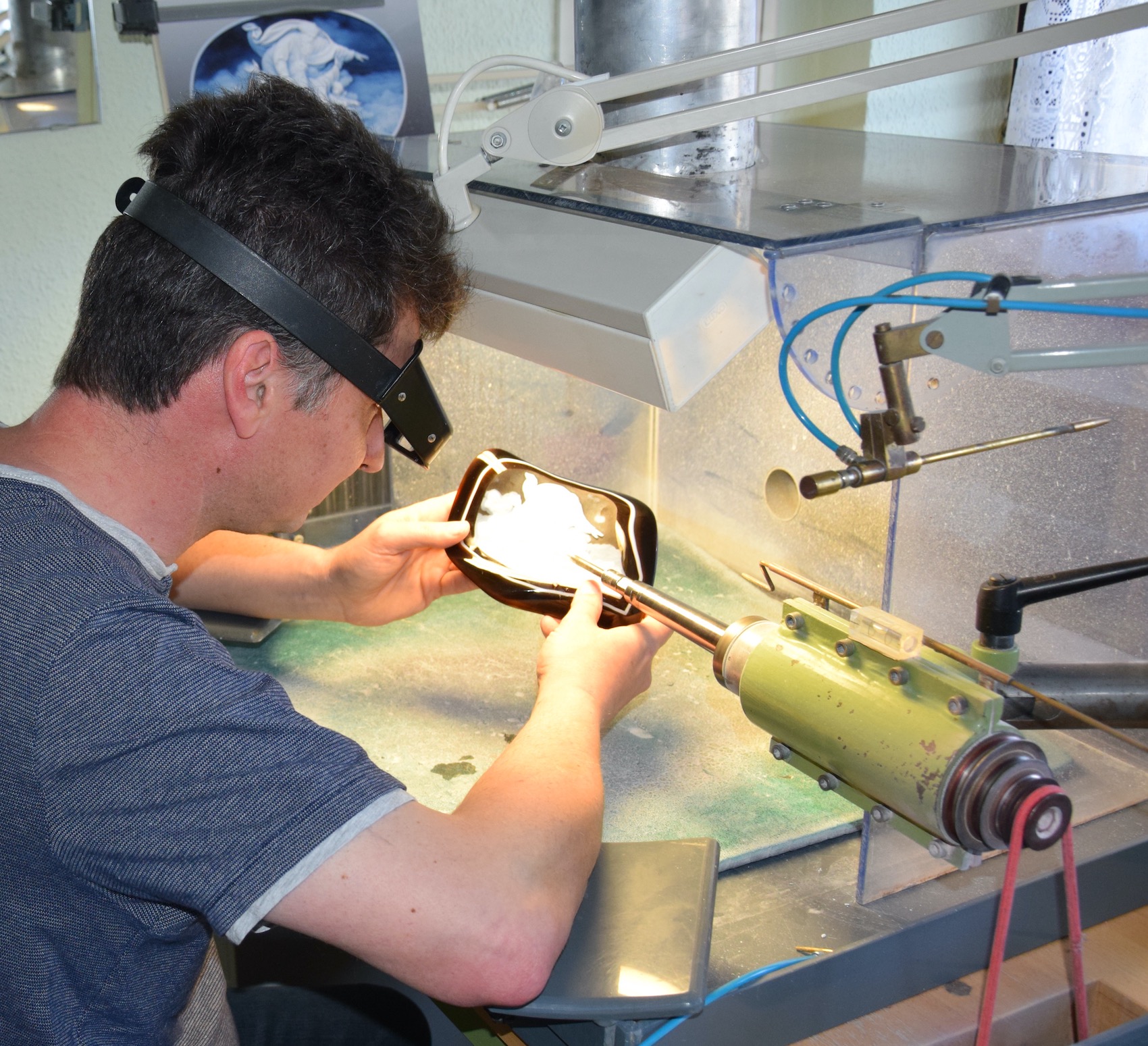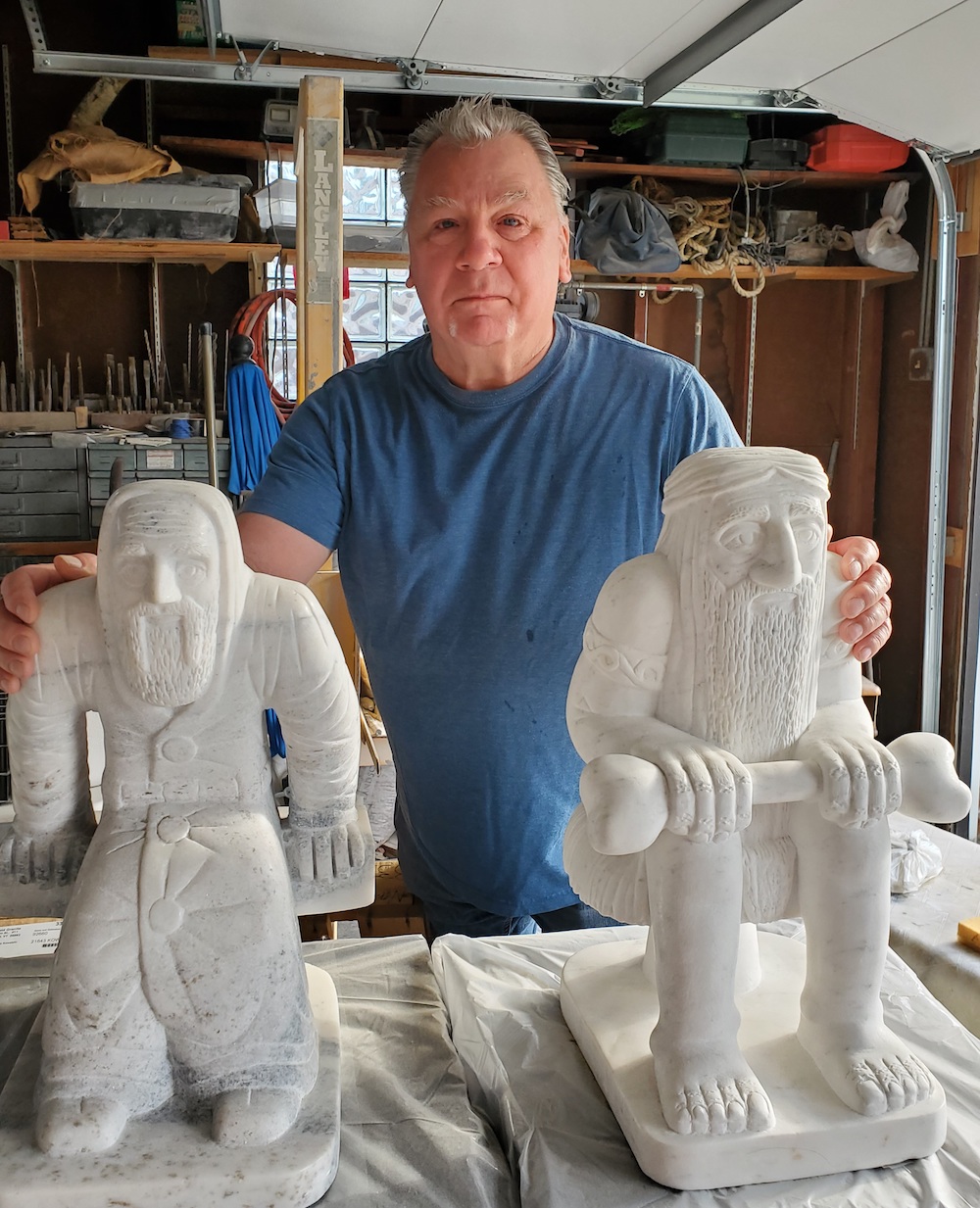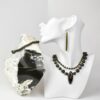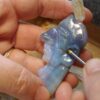The ivory carved puzzle ball displayed at the Lizzadro Museum was made in Canton (today’s Guangzhou) as an export curio to Europeans during the 19th century. It is also known as “the Ball of the Devil’s Work” in China because of the extremely complicated techniques required to carve and decorate the multiple orbs nesting inside each other.
To carve a puzzle ball, the artist first drills evenly distributed conical holes in a sphere-shaped ivory block. Layers are created before decorations are made. Using an L-shaped chisel, the artist carefully carves concentric gaps from inside to outside to form layers that enable individual orbs to float freely inside each other. The delicate decorations on the surface of each ball are carved by another type of long tools passing through the holes. Resting on a heavily decorated tall stand, the Lizzadro puzzle ball is featured with 24 layers, an example of the excellent craftsmanship, extensive patience, and vivid imagination.
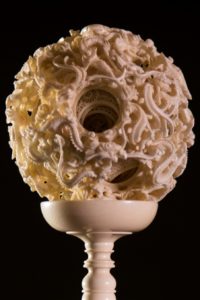 As the symbol of good luck, a puzzle ball is often characterized with auspicious motifs of Chinese mythologies, vernacular literature, or religious icons. The exterior layer of the Lizzadro puzzle ball is intricately decorated with intertwined dragons and swirling cloud patterns covering the entire surface. The decorations of the inside orbs are much simpler, with lace-like geometric patterns that resemble the shape of copper coins in traditional China. The same decorative designs of dragons are also seen on the openwork base, which is surmounted by two boys.
As the symbol of good luck, a puzzle ball is often characterized with auspicious motifs of Chinese mythologies, vernacular literature, or religious icons. The exterior layer of the Lizzadro puzzle ball is intricately decorated with intertwined dragons and swirling cloud patterns covering the entire surface. The decorations of the inside orbs are much simpler, with lace-like geometric patterns that resemble the shape of copper coins in traditional China. The same decorative designs of dragons are also seen on the openwork base, which is surmounted by two boys. 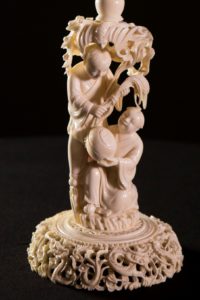 The one holding a covered bamboo container, likely a food box, kneels in front of the other, who stands behind him and presents a spike of rice, together as symbols of harvest. A bat, the symbol of happiness, hovers above the boys to convey more blessings. The combination of real and mythical motifs for auspicious meanings is a common feature of Chinese carvings.
The one holding a covered bamboo container, likely a food box, kneels in front of the other, who stands behind him and presents a spike of rice, together as symbols of harvest. A bat, the symbol of happiness, hovers above the boys to convey more blessings. The combination of real and mythical motifs for auspicious meanings is a common feature of Chinese carvings.
Valued for its luxurious quality and rarity, ivory has been a highly sought-after material showcasing the power and social standing in ancient China. The use of different types of ivory in Chinese art could be traced back to 4,000 years ago. However, the practice has drastically changed since the international trade in ivory was banned in 1989. The Chinese government outlawed all domestic ivory trading and processing in 2017, which has urged contemporary ivory carvers to explore new materials such as ox bones and Tagua nut to continue this centuries-long technique.
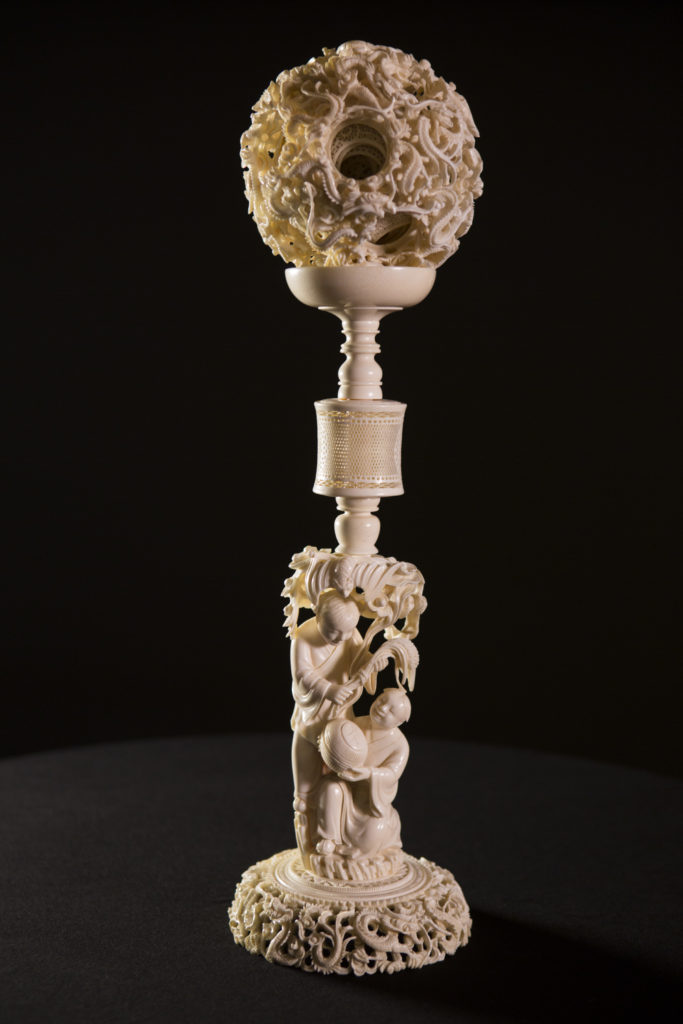
19th Century China
20” high, ball is 5.5” diameter with 24 openwork spheres

